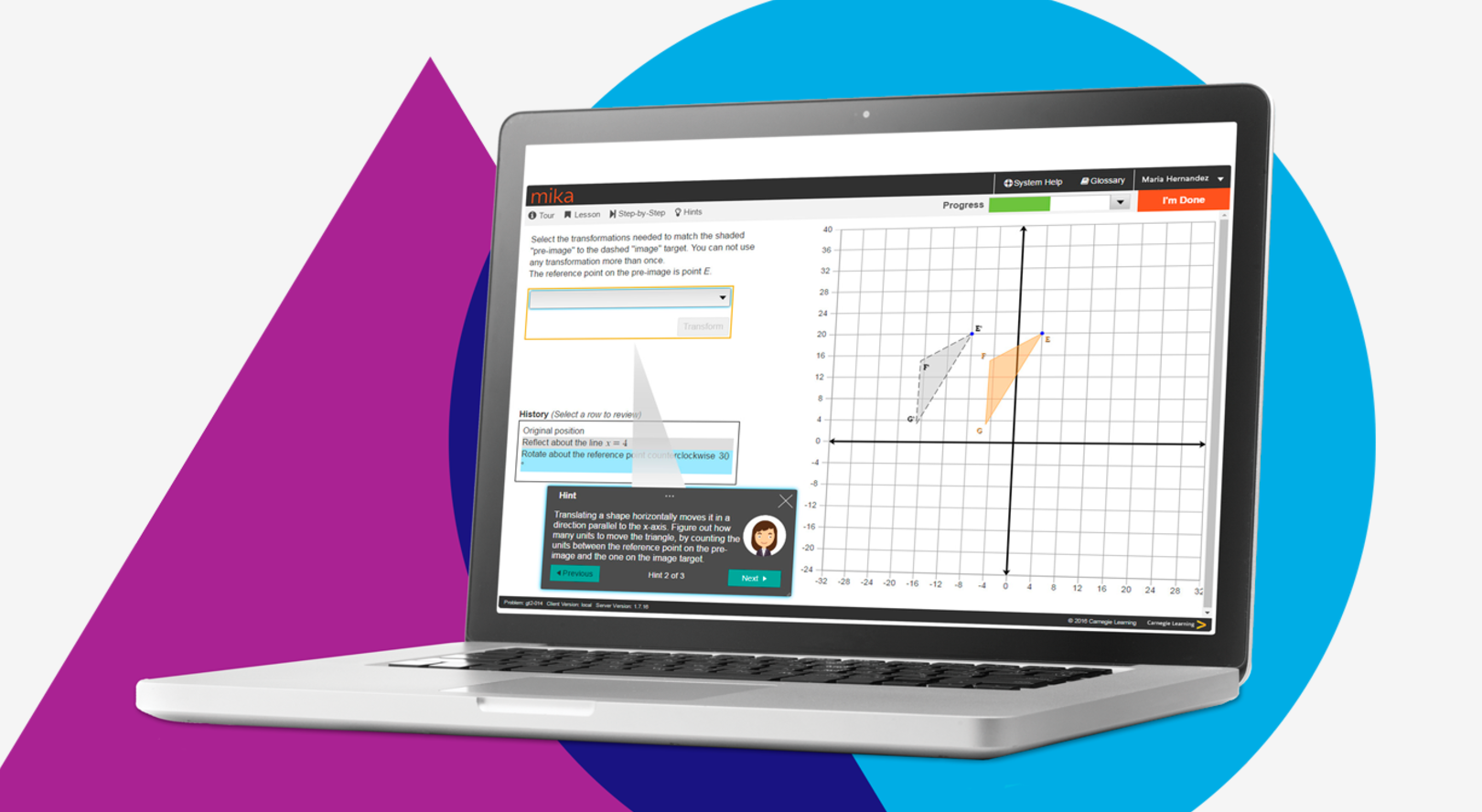Though yet to become a standard in schools, artificial intelligence in education has been taught since AI’s uptick in the 1980s. In many ways, the two seem made for each other. We use education as a means to develop minds capable of expanding and leveraging the knowledge pool, while AI provides tools for developing a more accurate and detailed picture of how the human mind works.
AI’s digital, dynamic nature also offers opportunities for student engagement that cannot be found in often out-dated textbooks or in the fixed environment of the typical four-walled classroom. In synergistic fashion, they each have the potential to propel the other forward and accelerate the discovery of new learning frontiers and the creation of innovative technologies. Some of this observation is explored further in our AI Future Scape series where we examine how the leaders of tomorrow in businesses and governments are educated on AI practices and will thus, play a key role in the future of AI’s development.
In this article we provided examples of ways in which AI is being pioneered and applied in education. While the applications included are in use in some form today, one could argue that most are still in a relatively “primitive” stage in terms of envisioned long-term objectives.
Specifically, we explore:
- Smart Content – Technology that attempts to condense text books into useful tool for exam preparation such as true or false questions
- Intelligent Tutoring Systems – Personalized electronic tutoring customized to the learning styles and preferences of the pupil
- Virtual Facilitators and Learning Environments – Virtual human guides and facilitators for use in a variety of educational and therapeutic environments
Out of those provided, intelligent tutoring systems (ITS) seem to have made the most progress over the last 20 years, as one of the original concepts for applications of AI in education. All have the potential to help shape a next generation of more personalized learning and responsive teaching. Our CEO Daniel dives deeper into the near-term future of Online Education and AI on an episode of our podcast, AI in Industry.
We first present an example of Smart Content utilizing machine learning/artificial intelligence in education.

Examples of Artificial Intelligence in Education
Smart Content
“Smart content” creation, from digitized guides of textbooks to customizable learning digital interfaces, are being introduced at all levels, from elementary to post-secondary to corporate environments.
Content Technologies, Inc., an artificial intelligence development company specializing in automation of business processes and intelligent instruction design, has created a suite of smart content services for secondary education and beyond. Cram101, for example, uses AI to help disseminate and breakdown textbook content into digestible “smart” study guide that includes chapter summaries, true-false and multiple choice practice tests, and flashcards. JustTheFacts101 has a similar, though more streamlined purpose — highlighting and creating text and chapter-specific summaries, which are then archived into a digital collection and made available on Amazon.
Other companies are creating smart digital content platforms, complete with content delivery, practice exercises, and real-time feedback and assessment. Netex Learning, for example, allows educators to design digital curriculum and content across devices, integrating rich media like video and audio, as well as self- or online-instructor assessment. Nextex also provides a personalized learning cloud platform designed for the modern workplace, in which employers can design customizable learning systems with apps; gamification and simulations; virtual courses; self assessments; video conferencing; and other tools. Learning platforms for the modern workplace are designed to allow employees to master additional skills and receive continuous and automated feedback, and when used strategically have the potential to help improve performance and increase production.
Intelligent Tutoring Systems
Mastery learning, a set of principles largely tied to the work of Educational Psychologist Benjamin Bloom in the 1970’s, supports the effectiveness of individualized tutoring and instruction in the classroom. Curriculum organized around a student’s progress, combined with timely targeted feedback, immediate opportunities for corrected practice, and enrichment activities, are fundamental mastery learning practices. Developing a one-on-one tutoring system that can provide these elements has been a coveted goal of AI researchers since the 1970’s and 1980’s.
Intelligent tutoring systems (ITS) have made much progress since their early counterparts. Though today’s systems, as articulated by Chaudhri, et al., (2013), are not quite at the “two-sigma effect” (i.e. two grade levels) of human tutors, there’s evidence to suggest that ITS systems perform as well, if not better, than individual human tutors for many students.
Carnegie Learning’s “Mika” software, for example, uses cognitive science and AI technologies to provide personalized tutoring and real-time feedback for post-secondary education students, particularly incoming college freshman who would otherwise need remedial courses. Carnegie states the cost of such remedial learning as costing colleges $6.7 billion annually, with only a 33% success rate for math courses. ITS provides the potential for students to more conveniently access flexible and more personalized modes of learning on an ongoing basis.

Carnegie Learning’s Mika platform
Pearson, in collaboration with University College London Knowledge Lab, notes that today’s model-based adaptive systems are also increasingly transparent, allowing educators to understand how a system arrived at a next-step decision and rendering them more effective tools for classroom teaching. For example, the iTalk2Learn system16, a system engineered and tested by Carnegie Mellon University to assess its effects on young students learning fractions, applied a learner model that explicitly included information about an individual’s mathematics knowledge, cognitive needs, emotional state, as well as feedback received and the students’ responses in turn.
Virtual Facilitators and Learning Environments
While it seems obvious that no one in education is eager for virtual humans to come and replace educators, the idea of creating virtual human guides and facilitators for use in a variety of educational and therapeutic environments is a promising area of development. Though not yet a reality, the ultimate goal in this field is to create virtual human-like characters who can think, act, react, and interact in a natural way, responding to and using both verbal and nonverbal communication.
The University of Southern California (USC) Institute for Creative Technologies is a pioneer in creating smart virtual environments and applications that draw on AI, 3-D gaming, and computer animation to develop authentic virtual characters and realistic social interactions. USC researchers have a number of ongoing projects in the space that hint at applications to come over the next two decades.

USC Creative Technologies’ SimCoach Prototype
Captivating Virtual Instruction for Training (CVIT), for example, is a distributed learning strategy that aims to integrate live classroom methods with best-fit virtual technologies—including virtual facilitators, augmented reality, intelligent tutor, and others—in remote learning and training programs. It’s worth visiting USC’s Creative Technologies prototype page and exploring the many other initiatives currently under development, from immersive training counseling for Army leaders to a personal assistant (PAL3) for life-long learning.
Paving New Learning Pathways in the Coming Decade
Education is a domain largely ruled by human-to-human interaction, and integration of AI has been slower to develop the necessary human-like attributes of responsiveness, adaptability, and understanding. Yet there are plenty of areas where AI’s inherent strengths help fill high-need “gaps” in learning and teaching.
AI’s ability to analyze large amounts of data in real-time (a student’s performance in a particular skill across subjects over the course of a year, for example) and automatically provide new content or specified learning parameters, helps meet students’ need for continual, targeted practice and feedback and also allows teachers to better understand student performance and orchestrate more effective personalized learning plans.
Woolf, et al., (2013) has proposed five key areas for ongoing researching in educating using AI:
- Mentors for every learner
- Learning 21st century skills
- Interaction data for learning
- Universal access to global classrooms
- Life-long and life-wide learning
The above seems a useful framework for framing objectives and generating aligned ideas, as researchers and companies continue to move forward in developing AI applications in education.
Not to be overlooked is the apparent fear that human educators can or will be replaced by AI technologies in the coming decade. As AI advances in this domain, it seems there is more evidence to support the idea that both intelligent systems and humans are needed to manage different aspects of students’ academic and social competencies. AI will likely not replace but will serve as an invaluable extension of the human expert, helping teachers to more effectively meet the diverse needs of many students simultaneously.
Image credit: Michael Morgenstern and The Economist




















